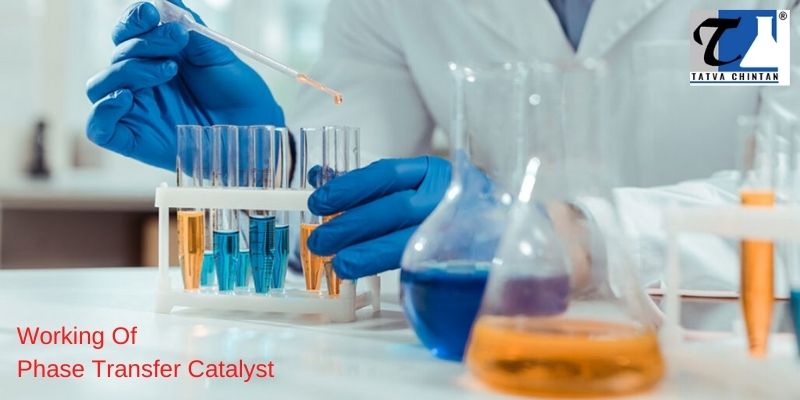How Phase Transfer Catalysts Work And Its Applications
Phase transfer catalyst is one of the most premium components of the chemical industry. Without the presence of a phase transfer catalyst, many chemical processes would come to a halt. The phase transfer catalyst helps in the migration of the reactants from one phase to another. If the phase transfer catalyst is not present, the chemical reaction will either not happen or yield different results. Maybe these results are not always desirable. Phase transfer catalysts are essential for completing the chemical process because the chemical elements you use are not always soluble in the heterogeneous solutions and organic phase. Moreover, phase transfer catalysts are essential for accelerating the chemical processes and yield faster results.
The Working Of The Phase Transfer Catalyst:
There are some basic steps in the phase transfer catalysts process. In every phase transfer catalyst, you will find these two main steps. These steps will determine how the phase transfer catalyst can support initializing the reaction.
First step:
In this step, there is a transfer of the anion present in the elements from an aqueous solution to the organic phase. There is a sequence of steps that will help in achieving the desired results. When the anions from the aqueous phase have been transferred to the organic phase, it is called a transferring stage. In this stage, the anions have to pass through three equilibrium states:
(I) the quaternary ammonium salts’ transfer takes place from the organic to the aqueous phase.
(2) The chloride ions will exchange their position with the anions of the element in the aqueous phase
(3) the quaternary ammonium salts will exchange the anions from the aqueous phase to organic.
If you are carrying out the entire phase transfer reaction, then the rate of transfer will determine the rate of the overall reaction. If the rate of transfer is fast, the chemical reaction will get completed at a faster speed. Moreover, the reaction will yield the best results.
Second Step:
In the second stage, there will be the displacement reaction. The displacement reaction is also known as the intrinsic reaction for managing the next phase of the process. In the first step, the anions get transferred to the organic state. Now, the anions will form a product in the organic phase. In this phase, the reaction will execute only between the quaternary ammonium salt and the organic solution.
Phase transfer catalyst is vital for significant chemical reactions in the chemical industry because of several factors. It helps in increasing the speed of the reaction, yields better results, and ensures that no/fewer byproducts are generated. Moreover, the phase transfer catalysts will also ensure that harmful solvents are not needed in the chemical process. It helps in minimizing the requirement of raw materials and decrease waste production.
What Are The Different Types Of Phase Transfer Catalyst?
In the chemical industry, you will find different types of phase transfer catalysts. These are known as phosphonium salts, quaternary ammonium salts, and crown ethers. Out of all these, quaternary ammonium salts are the most popular and in-demand PTC in the chemical industry. Moreover, it is the most inexpensive PTC that the chemical manufacturing industry needs.
Applications Of Phase Transfer Catalyst In Chemical Industry:
PTC is available in the form of a co-catalyst for surfactants in various hydroxide reactions. PTC is useful when the weak acids are not able to yield better results from the chemical reactions.
In nucleophilic substitution, you will find great use of the PTC. PTC's most crucial function is to support the transfer of ions in organic compounds.
PTC supports the use of more affordable raw materials in the chemical industry. Raw materials such as potassium carbonate and aqueous NaOH solution are the best alternative to the expensive and harmful solvents.
Phase transfer catalyst has a vital role to play in the Perfumery and Fragrance Industry. Industries require PTC for synthesizing phenylacetic acid.
Pharmaceutical industries use phase transfer catalysts for the manufacturing of medicinal drugs. The drugs are Ritalin, dicyclomine, oxalate, and phenoperidine.
Moreover, the chemical industries use phase transfer catalysts to identify various chemical elements in their raw form. These chemical elements are sulfide, iodide, cyanide, and many others.
Summary:
If you are looking for phase transfer catalysts at affordable rates, reach out to Tatvachintan. Here you will find the best chemical raw materials for your manufacturing or pharmaceutical industry usages. You can visit the website to check the chemicals available at Tatvachintan.






Comments
Post a Comment